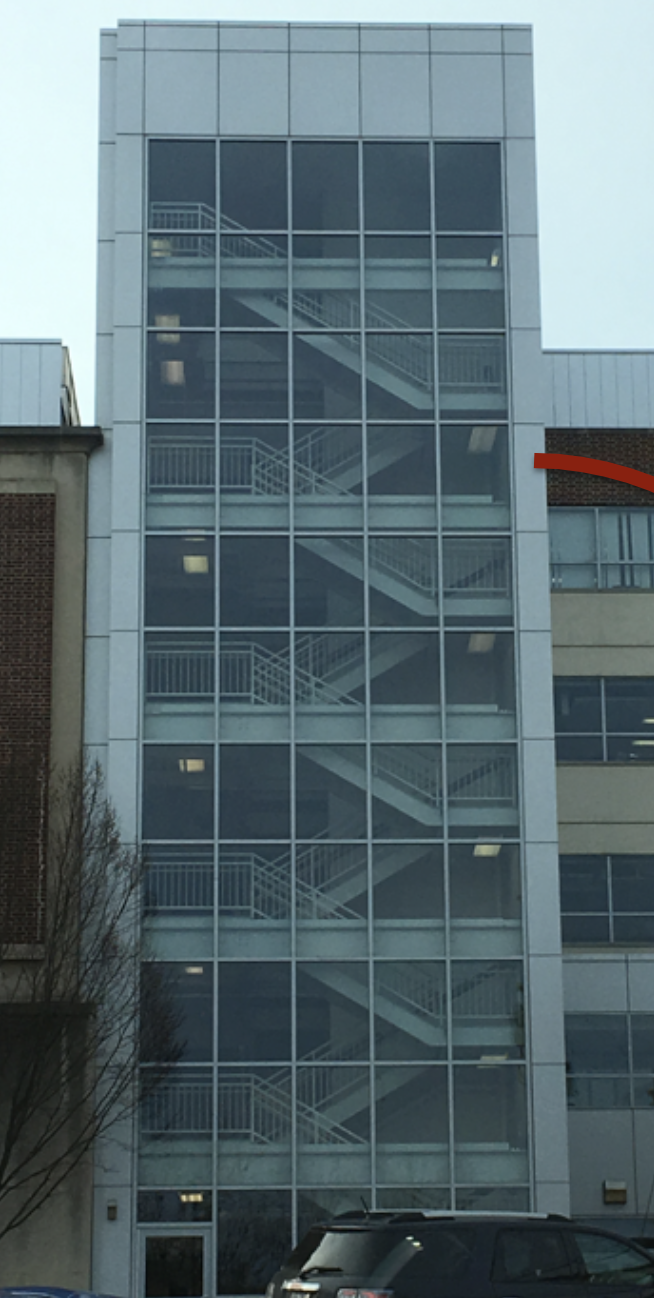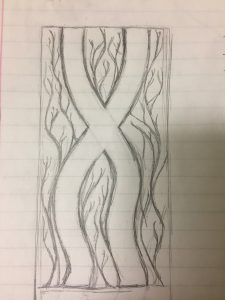Acopian Engineering Center is home to any student pursuing an engineering education. Students will spend a vast majority of their four years walking the halls and stairs of Acopian. Currently, this building doesn’t foster a creative or positive learning environment. Acopian is not an architecturally pleasing building, and its lack of enticing aesthetics perpetuates the negative connotations of engineering as a discipline that focuses solely on technological performance. Acopian is a no-frills, cut and dry building designed to provide a space for academics but does nothing more to foster learning.
Acopian Engineering Center was built for functionality, not to be the most aesthetically pleasing building on this campus (S. Hummel, personal communication, November 10, 2017). This explanation perfectly highlights what our project hopes to accomplish; adding an art sculpture to the central stairwell that will transform this dull, dreary building into a happier, brighter learning environment. “It’s not about adding on arts education. It’s about fundamentally changing education to incorporate the experimentation and exploration that is at the heart of effective education” (Lahey, 2014, p.3). Lafayette has the privilege of having an art department on campus, therefore why wouldn’t they use it to help diversify the curriculums of all disciplines?

Current Acopian Staircase
Lafayette engineering is an intense, intellectual, and powerful community that strives to create and produce only the best engineers. Due to this competitive nature, the engineering culture has difficulty understanding the benefit of collaborating with other community members. Our goal is to change this culture by adding an art installation that highlights the interdisciplinary nature of engineering by showcasing the power of combining multiple groups of the Lafayette community to spice up Acopian. By adding an artistic element, the building will be brighter and more welcoming not only for the engineering students, but for prospective students and visitors as well. We want this project to start a conversation about engineering, art, sustainability, community, and what we believe should be the future of engineering.
The future of engineering will not be brought about without issue. We must overcome numerous obstacles before implementing our art display. These problems include the constraints of the canvas, the view of art within engineering, and the expert culture within engineering. A limiting factor for our design process is the constraints that the canvas puts on our design. Our canvas, the glass wall behind Acopian, is limited in that its structural strength is uncertain at best. We are also limited in where we can attach our installation to the glass wall. However, this challenge has opportunities within. Adding to a glass structure present the unique opportunity to affect the natural light which enters the building. It also creates a dynamic where any art installation will be seen close up from inside the building and far away from outside Acopian. This creates the possibility to vary the art’s message of the art based on the viewer’s physical perspective. Overall, the Acopian stairwell presents numerous challenges and opportunities when considered as a canvas for our art installation.

Original design sketch by Katie Millar
The inspiration for our design flows from the Lehigh and Delaware Rivers in the city of Easton. The two rivers have played an integral part in the shaping of the Easton community, and by extension the Lafayette community. Our design will consist of two plastic halfpipes, formed in the rough likeness of a river path, which will be affixed to the outside of the glass window panes in the Acopian stairway. Within these plastic halfpipes, technicolor glass orbs will be strung across the piping by steel rods. Surrounding the halfpipes will be a series of decals on the windows designed to resemble tributaries. Once again playing on the theme of the rivers running through Easton. The decals will add to the artistic element of the installment by leaving interesting shadow patterns within the interior stairway. Additionally, the glass orbs will reflect light into the stairwell, creating an interface of colorful lights and contrasting shadows.
The two plastic half-pipe “rivers” serve as a metaphor of the merging between engineering and liberal arts. To highlight this as a key principle of our Lafayette experience, the installation will also contain a pumping mechanism to supply a flow of water through the plastic halfpipes. The water will not only increase the aesthetic appeal of the installation, but it incorporates fundamental aspects of creative engineering design and more calming environment. Understanding the concepts of fluid mechanics is an integral aspect of an engineering education, and including a pump that utilizes these ideas in the art installation successfully blends the two disciplines.
The pump will be powered by solar panels located on the roof of Acopian, adding to the engineering aspects of the art installation. The solar panels allow for a higher degree of sustainability within the project. The panels will provide energy to power the water pumping mechanisms without requiring more substantial power requirements from Acopian. The installation is also sustainable in that the water that runs through the halfpipes will be collected from rainwater, and recycled through the system.
This project will include social, political, economic, and technical analyses that discuss the design details in more depth. At present, we have three possible project stages of varying economic and feasible difficulties to present to key community members with the goal of gaining support and funding for the installation. The hope is that our research will convince key community members that this project is worth investing time and money into because it will benefit student life and the Lafayette community.
